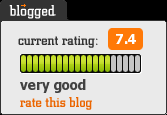So if I had to define my interests so far, I would report that I am going to center on academic libraries in community colleges and their efforts to instruct students towards greater rates of computer literacy. In other words, in what ways are community colleges using their instruction on computer literacy to endorse the ubiquitous proliferation of computers and technology in the typical student's life.
I have to gather several resources and eventually synthesize and analyze them, but I can tell you right off the bat that the Primary Source bunch of the lot that I have already created is this article from the 48th volume of the number 4 issue of the Peabody Journal of Education (pages 294-299). This article written by J.R. Hill is titled, "The Computer: A Versatile Tool for the Community College," and was written in, get this, July of 1971. Therefore it is written three years after Kubrick's 2001 (1968) which seems like to me was the public's first experience with the idea that computers could run everything, and the subsequent dystopia that computers could enslave and create catastrophe for the human species.
What does J.R. Hill recommend, you ask? I mean because his recommendations in 1971 sound like predictions to us in 2009. Hill recommends many things but he starts his exposition with the idea that, "the community college has a responsibility to promote computer literacy, i.e. to provide all students with a general understanding of computers and the ways they are used" (1971, par.2). In addition, Hill believes that there are really "two diverse uses in the computer as instructional environment...(1)as a subject of instruction;(2)as a tool for instruction" (1971, par. 4) Moreover, the curriculum of Hill's two educational directives would emphasize "(1)the basic concepts of a computer, its development and use, (2)the uses, and consequent effect on the student, in his discipline or field of interest, (3)the social impact of advances in computer technology" (1971,par. 8).
So, why am I telling you all this you must inevitably ask. Well, for starters, any time you are afforded the gift of hindsight and a primary source from an authoritative place rears it's anachronistic head, then you almost have a duty to inspect the author's predictions and fill in the context of the years with the core theoretical curriculum your institute is offering you (in the form of a grad program, etc.). And what Hill is telling us is that we were going to get over the technological awe associated with computers pretty quickly. In fact, the personal computer would only really become popular and accessible in 1981 IBM's 5150 and then in 1984 with Apple's Macintosh. Before that, computers were gigantic calculator lockers cooled by tons of ice with distorted, crazy acronyms like ENIAC for a name.
Another great article about teaching to increase information literacy, especially as it relates to increasing database usage is Jeff Wahl's article, "Front Range Community College: Increasing Student Database Use Through Library Instruction" which appeared in the 2007 issue of Colorado Libraries (v.33, No. 3). In this article, Wahl talks about how he "increased by 372% in one year at a small community college" (2007) the use of electronic databases. And, Wahl did by creating a strategy of instruction and services that would be offered by Wahl. Wahl was able to offer "75 presentations to a total of 1,519 students" (2007, pg. 14) and offers some very good, useful tips on bibliographic instruction. One of those tips are to "present for a few minutes and then stop to allow students to run their own searches fora few minutes" (2007, pg.15). Another great tip deals with presenting less information and databases at the same time, "the lesson would be more effective if the search examples I demonstrated were related to actual topics that students would be required to research for classes" (2007, pg. 15).
The last article I peeped so far deals with how Edward Erazo brought the teaching of information literacy skills to students in Florida's Community Colleges. The title of the article is "Using Technology to Promote Information Literacy in Florida's Community Colleges" and was written for the Fall 2003 of Florida Libraries. The article appeared in the 46th volume of the 2nd issue; Erazo is an academic librarian at Broward Community College. Erazo is very erudite about new technologies being used and established in Florida Community Colleges. By far, the most effective way to "promote information literacy" would be with "web sites"(2003, par.3). Erazo also found power point presentations useful and talked in great detail about online tutorials;but, the topic that grabbed my attention and seemed most to interest Erazo was virtual reference and streaming video. Erazo makes a strong argument that at least community college libraries should have streaming video and that "A ten minutes video orientation at Seminole Community College covers much of the information that would be addressed in an in-person orientation in a library or learning resource center" (2003, par. 15).
Spicaresque:
A Spanglish blog dedicated to the works, ruminations, and mongrel pyrotechnics of Yago S. Cura, an Argentine-American poet, translator, publisher & futbol cretin. Yago publishes Hinchas de Poesia, an online literary journal, & is the sole proprietor of Hinchas Press.
Subscribe to:
Post Comments (Atom)

.png)

No comments:
Post a Comment